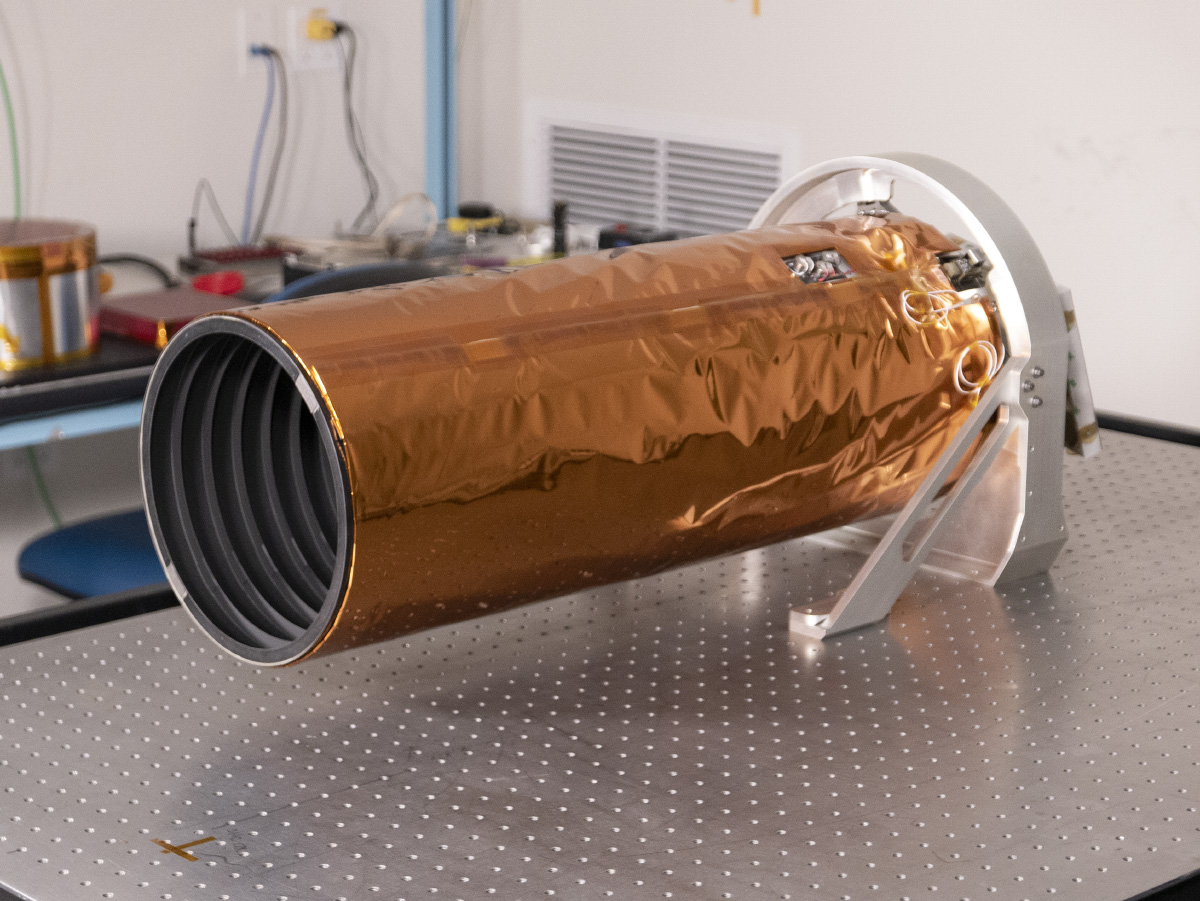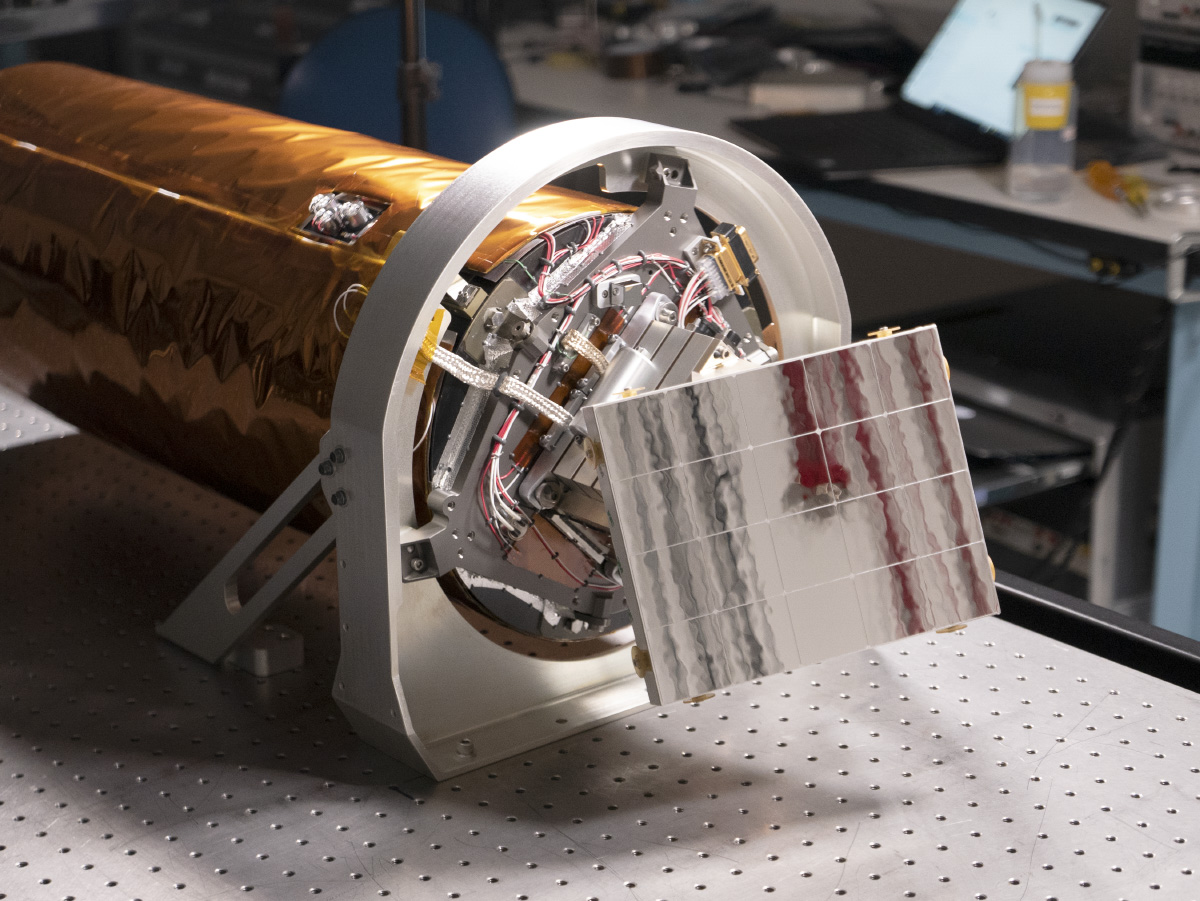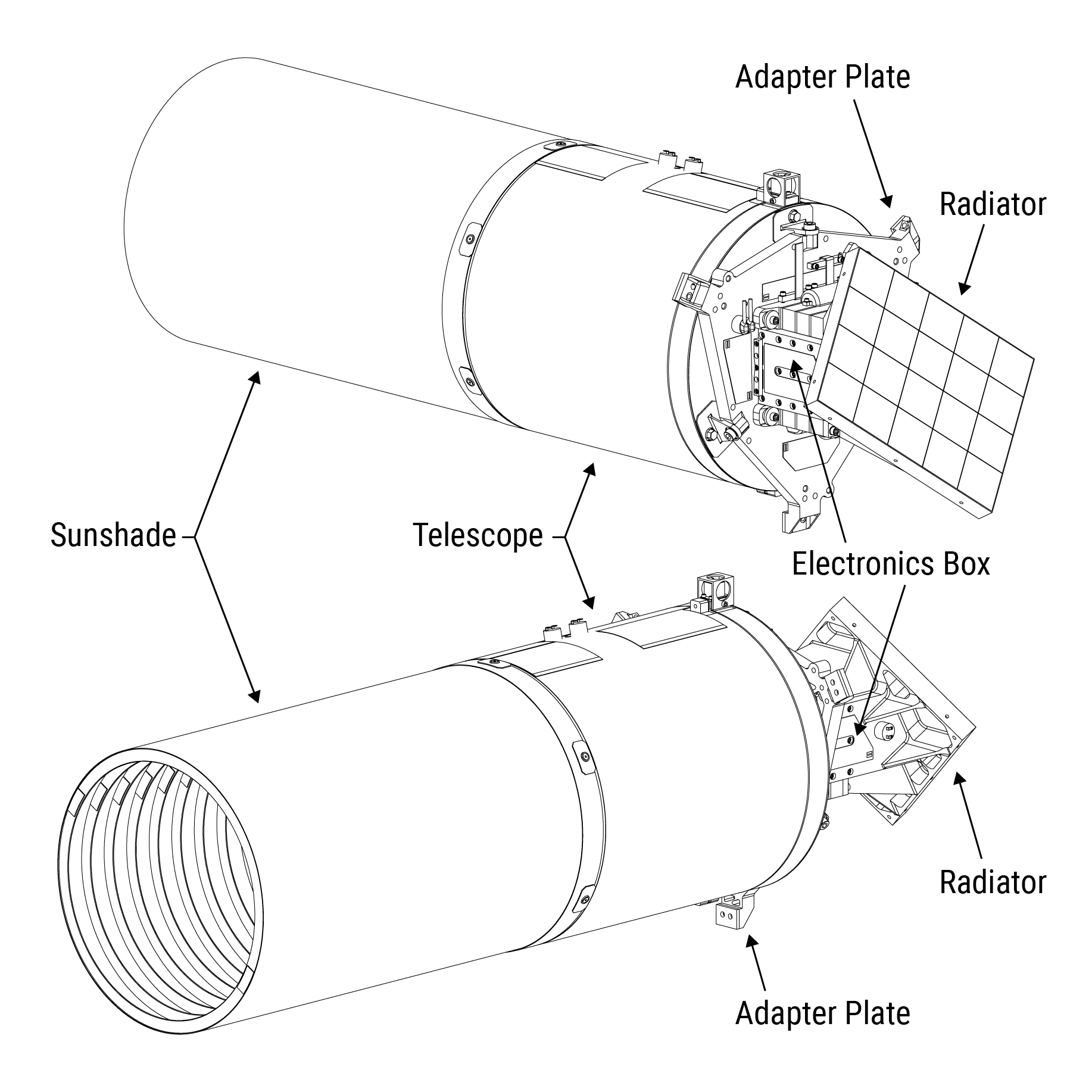What is ShadowCam?
ShadowCam is a NASA-funded instrument hosted onboard the Korea Aerospace Research Institute (KARI) Korea Pathfinder Lunar Orbiter (KPLO) satellite. By collecting high-resolution images of the Moon’s permanently shadowed regions (PSRs), ShadowCam will provide critical information about the distribution and accessibility of water ice and other volatiles at spatial scales (1.7 m/pixel) required to mitigate risks and maximize the results of future exploration activities.
The Moon’s PSRs never see direct sunlight and are illuminated only by light reflected from nearby topographic highs. This secondary illumination is very dim. To see details within the PSRs, ShadowCam was designed to be over 200 times more sensitive than previous imagers, like the Lunar Reconnaissance Orbiter Camera Narrow Angle Camera (LROC NAC). As a result, ShadowCam images will allow for unprecedented views into the shadows but will saturate while imaging sunlit terrain.
Download the ShadowCam factsheet, or for more information about the KPLO satellite and KARI, please visit www.kari.re.kr/eng/sub03_07_01.do .


